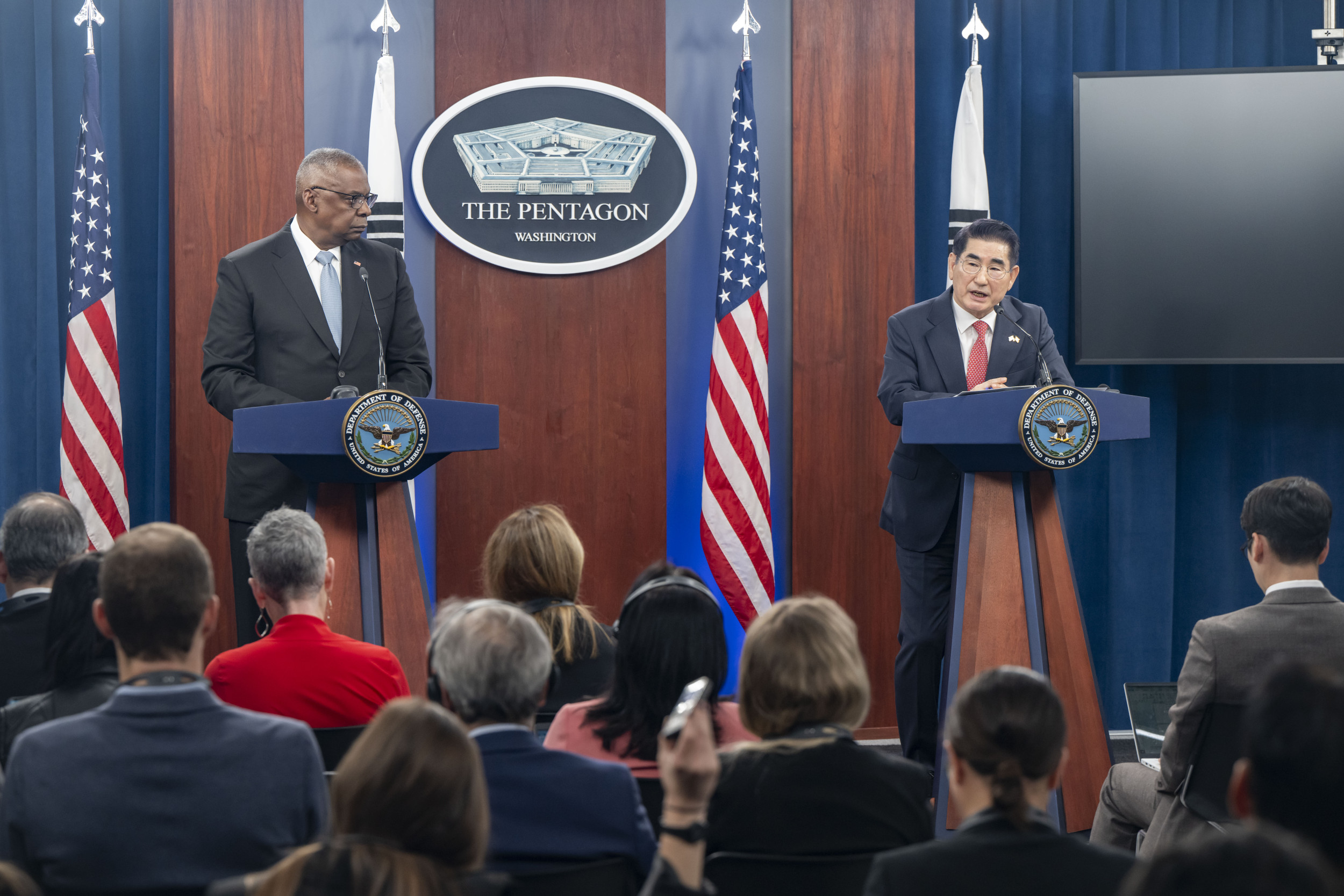
The United States has launched a new cooperation framework with South Korea, one of its key allies, in the contested Indo-Pacific region as it seeks to keep China in check.
The announcement was made following a meeting between the U.S. and South Korea at the Pentagon, where U.S. Defense Secretary Lloyd Austin and his South Korean counterpart, Kim Yong Hyun, discussed cooperation on regional security.
The newly established initiative, officially known as the Regional Cooperation Framework for U.S.-ROK Alliance Contributions to Security in the Indo-Pacific, aims to show the alliance is committed to maintaining a free, peaceful and prosperous Indo-Pacific region.
“The United States (U.S.) – Republic of Korea (ROK) Alliance remains the linchpin of peace and security not only on the Korean Peninsula but also in the Indo-Pacific region,” the Pentagon said in a statement, which used the official name of South Korea.
U.S. Air Force Senior Airman Madelyn Keech/U.S. Department of Defense
The initiative doesn’t mention China, a strategic competitor of Washington. However, South Korean media said it was designed to check China’s influence in the Indo-Pacific region, as Southeast Asia and the South Pacific Ocean are the framework’s target areas.
The U.S. and South Korea reaffirmed their support for the Association of Southeast Asian Nations (ASEAN) and determined to work closely with Pacific Island countries, according to the initiative, to ensure the “common national interest” of the alliance.
China is seen as the most influential economic power in Southeast Asia; however, Beijing has territorial disputes in the South China Sea with ASEAN, a 10-nation bloc that includes the Philippines and Vietnam. Manila shares a Mutual Defense Treaty with Washington.
China has continued to expand its strategic footprint in the South Pacific Ocean, where it sent two warships to Vanuatu in late October. This is the first known deployment of a Chinese 13,000-ton Type 055 destroyer to the southern part of the Pacific Ocean.
The U.S.-South Korea framework will focus on cooperation with ASEAN and Pacific Island countries on maritime security, multilateral exercises, capacity building, defense exports, industrial and technical issues and information sharing.
American and South Korean national interests can be advanced by “firmly upholding and strengthening the rules-based order” in the Indo-Pacific region, the Pentagon noted, which included the freedoms of navigation and overflight, as well as other uses of the sea.
The U.S. military regularly conducts freedom of navigation operations in the South China Sea to challenge what it calls “excessive maritime claims” by regional countries that are inconsistent with the United Nations Convention on the Law of the Sea (UNCLOS).
Japan, another key Asian ally of the U.S., has sent its self-defense forces to take part in the U.S.-led, multilateral maritime operations in the South China Sea. Beijing has claimed that both Washington and Tokyo have “no right to intervene” in the regional maritime disputes.
Newsweek has contacted the Chinese foreign ministry for comment by email.
